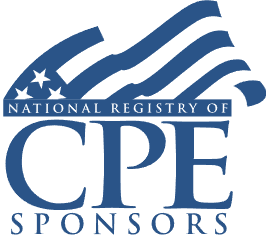Mastering Complex Consolidated Return Reporting: 163(j), NOLs, GILTI, Tax Attributes, Tax Allocations and Section 382

Course Details
- smart_display Format
On-Demand
- signal_cellular_alt Difficulty Level
Intermediate
- work Practice Area
Corporate Tax
- event Date
Tuesday, July 16, 2019
- schedule Time
1:00 PM E.T.
- timer Program Length
110 minutes
-
BARBRI is a NASBA CPE sponsor and this 110-minute webinar is accredited for 2.0 CPE credits.
-
BARBRI is an IRS-approved continuing education provider offering certified courses for Enrolled Agents (EA) and Tax Return Preparers (RTRP).
-
Live Online
On Demand
This course will guide preparers through difficult areas of consolidated return preparation. Tax reform brought with it a new level of complexity that is multiplied when applied to a consolidated group. The panel will explain how tax reform impacts the preparation of consolidated returns and guide practitioners through these and other issues, including consolidating NOLs, GILTI, Section 382 limitations and allocating tax attributes.
Description
Consolidating returns is a choice, not a requirement, and choosing to consolidate offers significant advantages. One company's income is offset by another's loss; one company's waning credits can be utilized by the group.
Recent tax reform changed the calculation and utilization of NOLs. Now an NOL deduction is limited to the lesser of the NOL carryforward or 80% of the consolidated group's taxable income. Excess losses cannot be carried back, but instead, are carried forward indefinitely. Calculations under Section 382, limiting losses after ownership shifts, continue to create challenges for consolidated groups.
Proposed regulations explain that Section 163(j) interest limitation provides a single threshold for controlled groups. This allows the calculation of this limitation to be made at the group level rather than using each member's adjusted taxable income (ATI). However, consolidated ATI is not reduced by intercompany transactions. The AICPA has requested that this is revisited.
Likely more troubling are the GILTI inclusion calculations under Section 951A. The proposed regulations clarify that GILTI inclusion is calculated at the group level. So that the GILTI inclusion is relative to the overall tax liability of the combined group, a quasi-single-entity approach is used in the calculation for consolidated returns. When the consolidated group tested income from CFCs is greater than the consolidated group's tested loss from CFCs, the entire loss is absorbed by the group. Conversely, if the group loss is higher, a pro-rata allocation of the amount used is made uniformly to all CFCs, regardless of the ownership structure of the CFCs within the controlled group. There are additional basis adjustments that must be made to reflect these allocations which add to the complexity of the calculation.
Listen as our consolidated return experts help tax practitioners address the difficulties of combined returns to maximize the benefits of consolidating. These new calculations, and allocating tax burdens and benefits among group members, add complications to consolidated return preparation that are absent on single-entity corporate returns.
Outline
- Consolidated return eligibility
- After tax reform
- GILTI, FDII and Section 250 deductions
- 163(j)
- NOLs
- Ever-present issues
- Intercompany transactions
- Allocating tax attributes
- E&P
- Section 382 limitation
- State tax issues
Benefits
The panel will review these and other critical issues for consolidated returns:
- Calculating GILTI inclusion and related 250 deduction
- Determining the 163(j) limitation
- Computing the Section 382 limitation
- Allocating NOLs, tax attributes and basis adjustments
- Preparing state returns
NASBA Details
Learning Objectives
After completing this course, you will be able to:
- Identify additional issues of consolidating after tax reform
- Determine if entities are eligible to file a consolidated return
- Understand the basics of GILTI inclusion and related deduction
- Decide how to allocate basis and tax attributes
- Recognize state tax return filing considerations for controlled groups
- Field of Study: Taxes
- Level of Knowledge: Intermediate
- Advance Preparation: None
- Teaching Method: Seminar/Lecture
- Delivery Method: Group-Internet (via computer)
- Attendance Monitoring Method: Attendance is monitored electronically via a participant's PIN and through a series of attendance verification prompts displayed throughout the program
- Prerequisite: Three years+ business or public firm experience preparing complex tax forms and schedules, supervising other preparers or accountants. Specific knowledge and understanding of pass-through taxation, including taxation of partnerships, S corporations and sole proprietorships, qualified business income, net operating losses and loss limitations; familiarity with net operating loss carry-backs, carry-forwards and carried interests.

Strafford Publications, Inc. is registered with the National Association of State Boards of Accountancy (NASBA) as a sponsor of continuing professional education on the National Registry of CPE Sponsors. State boards of Accountancy have final authority on the acceptance of individual courses for CPE Credits. Complaints regarding registered sponsons may be submitted to NASBA through its website: www.nasbaregistry.org.

Strafford is an IRS-approved continuing education provider offering certified courses for Enrolled Agents (EA) and Tax Return Preparers (RTRP).
Unlimited access to premium CLE courses:
- Annual access
- Available live and on-demand
- Best for attorneys and legal professionals
Unlimited access to premium CPE courses.:
- Annual access
- Available live and on-demand
- Best for CPAs and tax professionals
Unlimited access to premium CLE, CPE, Professional Skills and Practice-Ready courses.:
- Annual access
- Available live and on-demand
- Best for legal, accounting, and tax professionals
Unlimited access to Professional Skills and Practice-Ready courses:
- Annual access
- Available on-demand
- Best for new attorneys
Related Courses

Nexus Limitations and Protections for Service Providers Post-Wayfair
Available On-Demand

State Taxation of Income From Foreign Affiliates After the Tax Reform
Available On-Demand

Section 965 Foreign Deemed Repatriation Transition Tax: Final Regulations
Available On-Demand